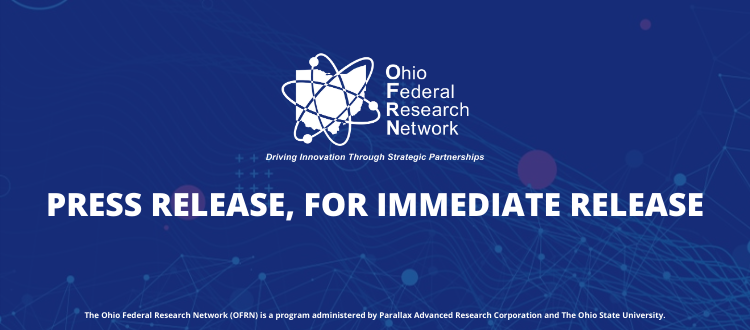OFRN PRESS RELEASE – June 26, 2018
(Cincinnati, Ohio) … Every day, vast amounts of data are being collected about us from our cell phones, computers, and even our homes, yet the ways to gather data from the human body in a non-invasive manner are still limited. However, Dr. Jason Heikenfeld, an electrical engineering researcher and Professor at the University of Cincinnati, working in partnership with researchers at Air Force Research Laboratory in Dayton is making strides in the field of biochemical sensing and gathering useable data from just simple daily sweat.
The research has been shepherded and funded by the Ohio Federal Research Network (OFRN), a nationally recognized initiative designed to create a pathway for academia, industry and government researchers to work together in an open, collaborative approach to drive innovation.
Dr. Heikenfeld’s research is focused on developing reliable, low-cost, non-invasive sensors and systems that can gather and provide data in real time directly from the human body that will allow people to monitor physical performance and conditions. These sensors and systems are utilizing human sweat and the chemical data it provides, in order to measure physiological reactions in the body. Ever wanted to know if you were on the path to dehydration before you were actually thirsty? This technology could collect and analyze the sweat you naturally produce, without any daily disruption.
Currently, doctors and other practitioners are only able to gather biochemical data through invasive procedures, such as drawing and analyzing blood. But this approach has severe limitations: it requires a technician, facilities, and time—it can’t provide real time results. Dr. Heikenfeld’s research would enable us to continuously gather key biochemical data that is produced under real-life conditions.
From workers out on an airport tarmac on a 100-degree day, to athletes training in harsh summer conditions to kids on the playground – there are worries about levels of dehydration. This technology will allow people to monitor their hydration level and then send alerts if levels become life threating.
The push for this technology came from the United States Air Force (USAF) and their desire to measure human health and performance during critical missions. According to Dr. Heikenfeld, “The Air Force was essential to this research, and we now have extended partnerships that were only made possible through the structure of the Ohio Federal Research Network.”
Dr. Heikenfeld added “What made this successful was USAF’s commitment not to chase a specific biometric and not chasing the technology solution immediately. USAF allowed the research to be collaborative and align with various applications. Through the collaborative innovation approach, the research was not limited to detecting certain data, such as cortisol levels under stress or tissue oxygen levels to detect hypoxia, rather it allowed it to expand into a larger framework that could lead to more and better data collection.”
Dr. Ali Reiter from OFRN’s Human Performance and Health Sciences Center of Excellence at Wright State University shared “The multi-university research being led by Dr. Heikenfeld utilizes an innovative approach to identify biometrics associated with human performance and to monitor these biometrics in sweat. The advances in capabilities developed under OFRN funding present a high potential to improve both human performance and patient care.”
Biomonitoring is already a significant commercial trend in people’s day to day life – just think about how many people who wear a Fitbit or Apple Watch. Dr. Heikenfield’s research has led to biometric data commercialization such as through Eccrine Systems Inc.’s Sweatronics platform. Sweatronics technology is wearable, flexible and long lasting and could easily be incorporated into pilots gear, a workers uniform, or exercise accessories.
OFRN has a goal to create new jobs and add $350 million in new federal research contracts over five years. To date, OFRN sponsored teams have received nearly $96 million in new research awards, with $350+ million more in the pipeline. OFRN funded research projects like this are all aligned with the strategic research priority areas of the Ohio-based federal labs and include 11 universities throughout the state and 52 industry partners.
For more information about the Ohio Federal Research Network, go to www.ohiofrn.org


